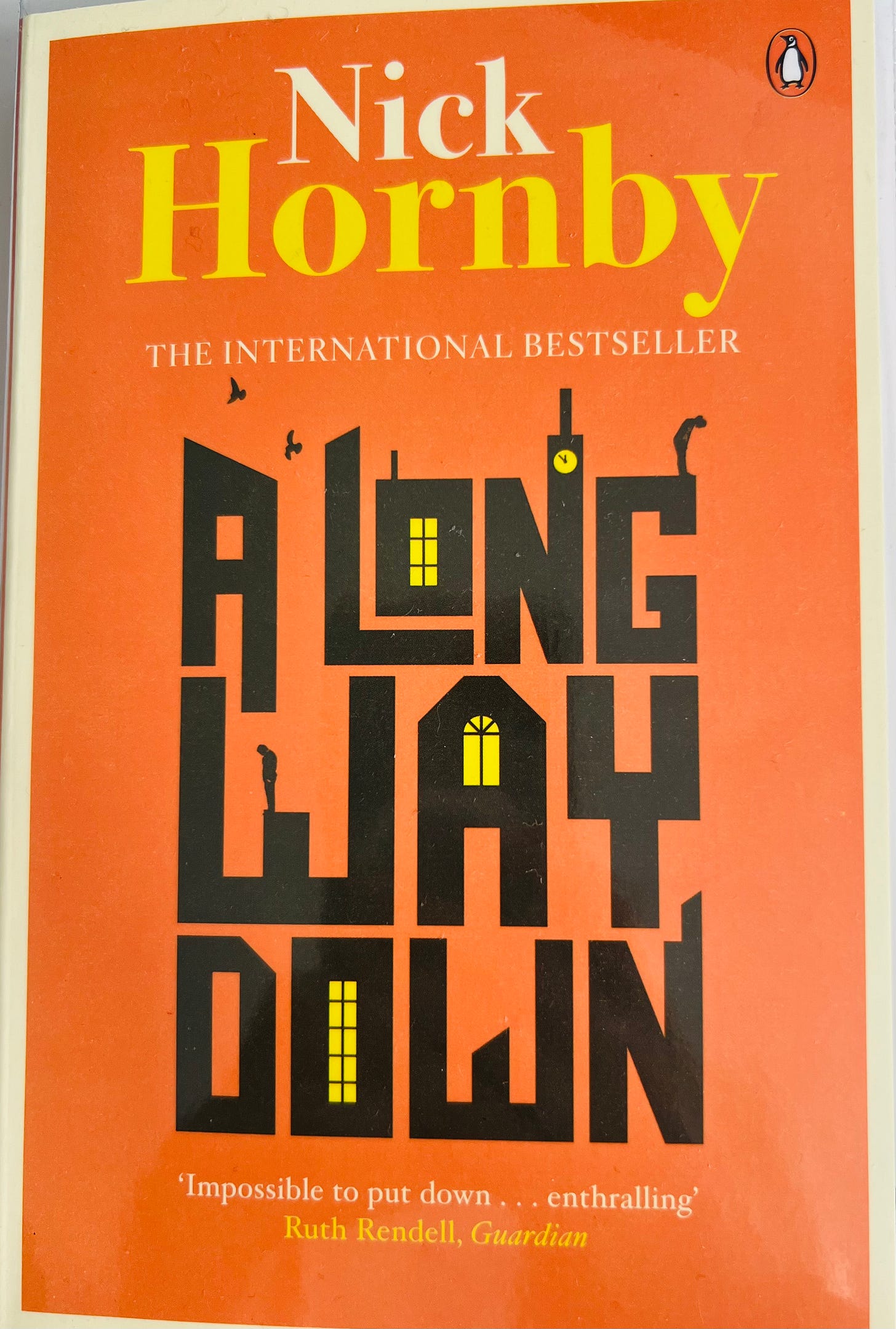Make a Pact
Exploring the cure for unhappiness in “A Long Way Down”
Have you been there? Standing among the somber faces at a funeral or remembrance service, mourning the loss of a schoolmate, a teacher, or a young student? The whispers circulate, but no one says it out loud—they "passed away," the details shrouded in silence. You read between the lines or later in the news, but the truth is too painful to speak. The empty chair reminds of a tragedy we struggle to comprehend, let alone discuss.
In a world where social media amplifies every high and magnifies every low, the struggle, especially for young people, to find a stable footing can feel overwhelming. The pressures—academic, social, and physical—loom large, often leading to a sense of isolation that can be devastating. When these feelings converge, taking a "long way down" can seem like a final escape, a quiet surrender to the unrelenting weight of despair.
"You see how it is? We’re all so terrified of the future, we’re all clinging to the past, and it’s killing us.
And in the meantime, this life we have—this now—well, it’s just slipping away."
But what if we could make a pact? What if the answer to unhappiness lies not in its acceptance but in actively seeking its opposite—happiness?
In A Long Way Down by Nick Hornby, suicide is portrayed with a stark realism that resonates deeply with its characters and readers alike. The novel follows four individuals who, by chance, meet on the roof of a building in London on New Year’s Eve, each intending to end their life. This shared moment becomes the catalyst for an unexpected exploration of their reasons for wanting to die and, ultimately, their reasons to continue living.
“I am not sitting here now because I suddenly saw sense.
The reason I’m sitting here now is because that night turned into as much of a mess as everything else.”
Hornby’s portrayal of suicide is layered with dark humour, empathy, and an unflinching look at the complexities of mental health. The characters’ struggles are depicted with raw honesty, exposing the tangled emotions—desperation, loneliness, anger, and hopelessness. However, Hornby also highlights the absurdity of life which adds a unique depth to the narrative.
"Can I explain why I wanted to jump off the top of a tower block? It's not the sort of thing you can explain.
It's not like you can say, 'Well, I had to jump, because X, Y, and Z.'
It's... it's not about reasons, really.
It's about how you feel. But what if you feel like shit and you're standing on the top of a building?
Doesn't that make sense?"
Hornby captures the paradoxical and often irrational nature of suicidal thoughts, emphasising how the characters grapple with their feelings in ways that may seem absurd but are deeply human.
The psychologist Rollo May complements:
"The opposite of courage in our society is not cowardice, it is conformity.
Even a dead fish can go with the flow."
The deep human struggle to resist the overwhelming currents of despair and societal pressures echoes the absurd yet profoundly human ways Hornby's characters grapple with their feelings. It underscores the importance of courage in facing and articulating these complex emotions, rather than simply conforming to the silence and isolation that often accompany them.
Through the interactions of the four protagonists—Martin, Maureen, Jess, and JJ—Hornby examines how suicide is not just a solitary act but one that is deeply connected to the relationships and circumstances that shape a person’s life. The novel challenges the idea that suicide is a straightforward solution to pain, revealing instead that it is fraught with uncertainty, fear, and often, a deep-seated desire for connection and understanding.
"We all spend so much time not saying what we want
because we know we can’t have it.
And because it sounds ungracious, or ungrateful, or disloyal, or childish, or banal...
Go on, say what you want. Maybe you’ll get it. I doubt it.
But by having it bottled up inside you,
you make yourself ill, surely? So, at the very least, talk about it."
Who among us doesn’t recognise the importance of communication and connection? We all know that unspoken desires and unresolved issues can build up, leading to a profound sense of hopelessness. Yet, even with this understanding, finding the courage to voice these feelings often remains one of the hardest challenges.
As the novel beautifully puts it:
"We were all reaching out for something—
a moment when the misery would stop,
when life would start to make sense.
But in the end, we found ourselves reaching out to each other,
even if we didn’t know it at the time."
This reminds us that reaching out—whether to others or simply for understanding—can be the first step toward finding the hope and connection we all need to keep going. For young people especially, the message is clear: no matter how isolated you feel, you’re never truly alone, and opening up can lead to the support you didn’t know was there.





